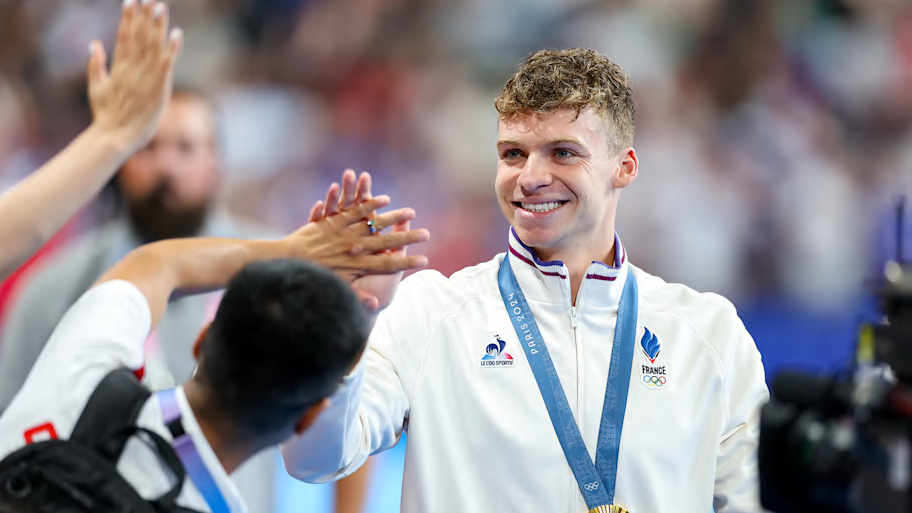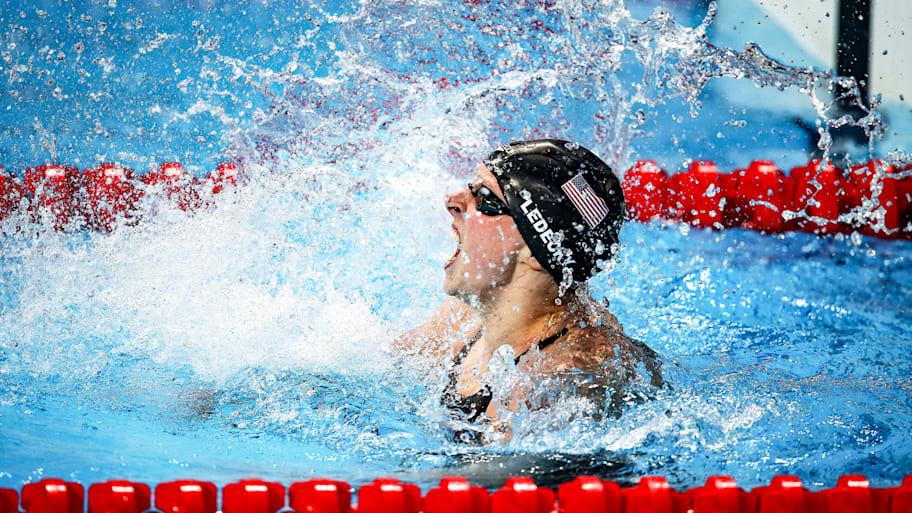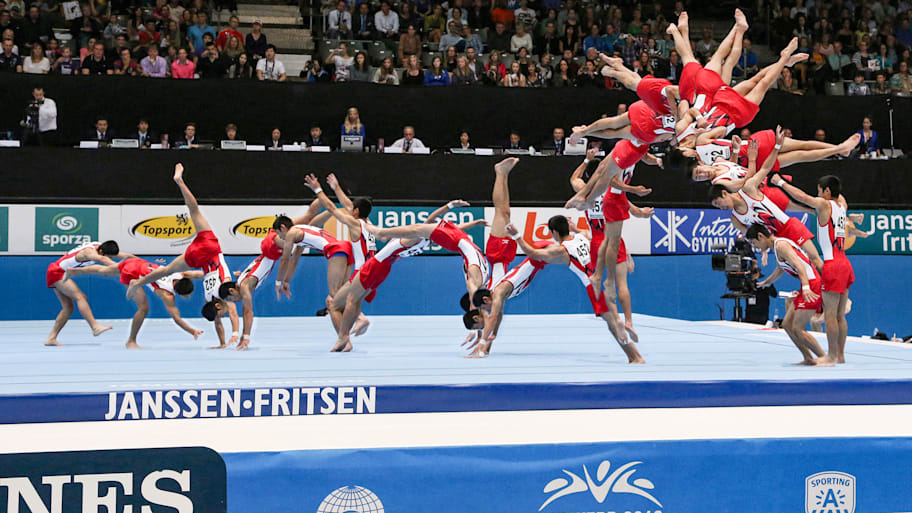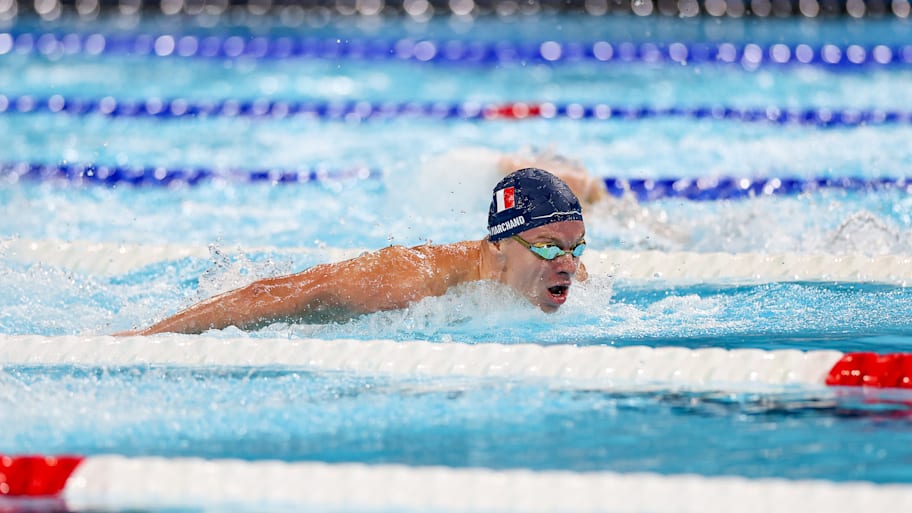When two-way great Shohei Ohtani turned his slugging slump into the greatest game in baseball history in Game 4 of the National League Championship Series, it started a discussion in the Sports Illustrated newsroom: What are some of the other top individual performances in sports? And how do they compare to Ohtani’s 10 strikeouts and three home runs?
Here are our picks for Olympic sports, swimming and gymnastics.
Men’s swimming: Marchand’s double gold in Paris
There are two nominees for this. The first: Michael Phelps winning Olympic gold medals at the 2008 Beijing Olympics on the same day in the 200-meter butterfly and 800-meter freestyle relay—both world records. The second: Frenchman Leon Marchand’s 200-meter breaststroke/200-meter butterfly double gold that blew the roof off the venue at the 2024 Paris Olympics.
The obvious person to ask which was best is Bob Bowman, who coached them both. He isn’t choosing. “Those would be the top two that I can think of,” he tells Sports Illustrated, without budging an inch in either direction.

Fine, I’ll make the choice. Since Phelps’s second gold was a relay, partially dependent upon his teammates, I’ll go with Marchand’s double. The first was the butterfly, which required running down world-record holder and reigning Olympic gold medalist Kristóf Milák in the final 25 meters. Less than two hours later, Le Roi Leon backed it up by winning the breaststroke wire-to-wire, defeating the defending Olympic champ in that event as well, Zac Stubblety-Cook of Australia. Marchand set Olympic records in both events.
“That's probably the greatest double I've ever seen in the history of the sport,” Phelps said on the NBC broadcast that night, and that’s a sufficient endorsement for me.
Greater than Ohtani? I’m going with yes. —Pat Forde
Women’s swimming: Katie Ledecky’s 2015 Worlds

In terms of Ohtani-esque versatility, toggling between a sprint event and the most grueling of races would qualify. Katie Ledecky, queen of all freestyle, did it in 2015 better than any woman has.
On Aug. 4 at World Aquatics Championships in Kazan, Russia, Ledecky dove in for a preliminary heat of the 200-meter free shortly after 10 a.m. local time. She came out qualified first for the semifinals that night—but before she could swim that semi, she had to take care of the 1,500 free.
That race went off at 6:05 p.m. Ledecky had already broken the world record the day before in the prelims and she did it again in the final, clocking in at 15:25.48. That mark that would stand for three years, until she broke it one more time with a record that still stands.
About 20 minutes later, Ledecky had to ignore the fatigue and lactic acid buildup, reverting to sprint mentality for the 200 semifinal. She barely snuck into the final, qualifying seventh—but went to win another gold the next night.
Greater than Ohtani? The only thing holding Ledecky’s performance back is that the 200 freestyles that day were not with medals on the line. —P.F.
Men’s gymnastics: Kenzo Shirai’s two new skills at Worlds

On Oct. 5, 2013, at the World Championships in Antwerp, Belgium, 17-year-old Japanese gymnast Kenzo Shirai debuted two brand-new skills in the final of the floor exercise, a backward quadruple-twisting layout somersault (named the Shirai for him), and a forward triple-twisting layout somersault (named the Shirai II). Fans and opponents alike applauded as he nailed the last pass, which ended with the Shirai—the first time anyone had ever landed a quadruple twist in a major final. His routine contained a preposterous 22 ¼ twists and made him the youngest ever male world champion in the event. (We’re not counting it, because it happened a day later, but he also dropped a new skill on vault—a triple-twisting Yurchenko, called the Shirai—in the same event.)
Greater than Ohtani? No. Shirai had a wild day, but his skills have more in common with one another than hitting and pitching do. —Stephanie Apstein
Women’s gymnastics: Maria Gorokhovskaya wins five medals in one day
The greatest day in gymnastics history has to be July 23, 1952, when Soviet gymnast Maria Gorokhovskaya won five medals—one gold, in the individual all-around, and four silvers, one each in the floor exercise, the vault, the uneven bars and the balance beam. Even before she and her teammates added a gold in the team event and a silver in the portable apparatus (since discontinued) on July 24, that was the most Olympic medals ever for a woman—and she won them in a day. (Because of the way gymnastics events are now scheduled, Simone Biles, who you might have expected to top this list, has never had a chance to rack up medals in one day in the same way.)
Greater than Ohtani? Yes. But if Ohtani does this again in the World Series, we’ll talk. —S.A.
More Olympics on Sports Illustrated
This article was originally published on www.si.com as The Olympic Performance That Might Be Better Than Shohei Ohtani’s Two-Way Classic.
